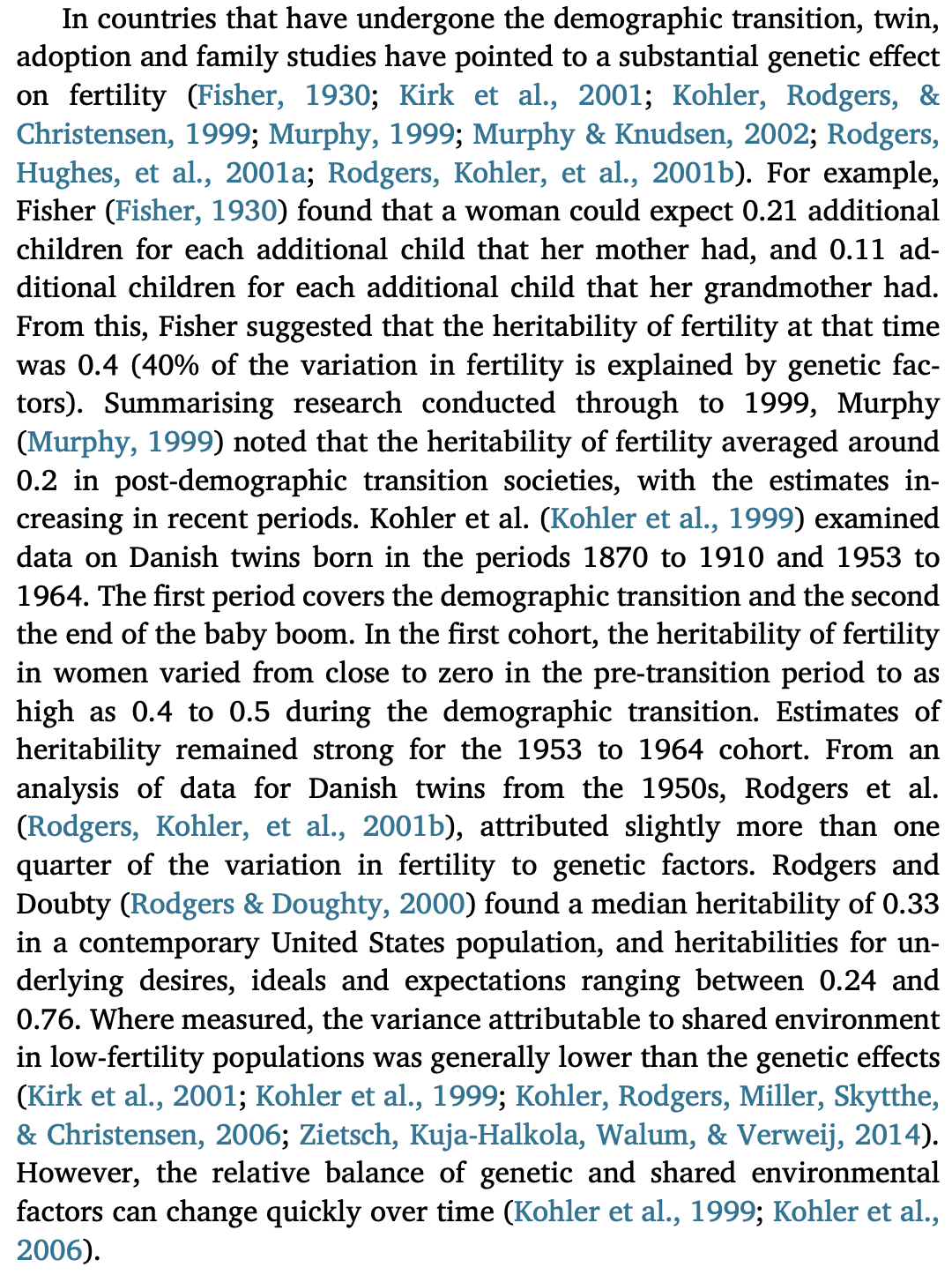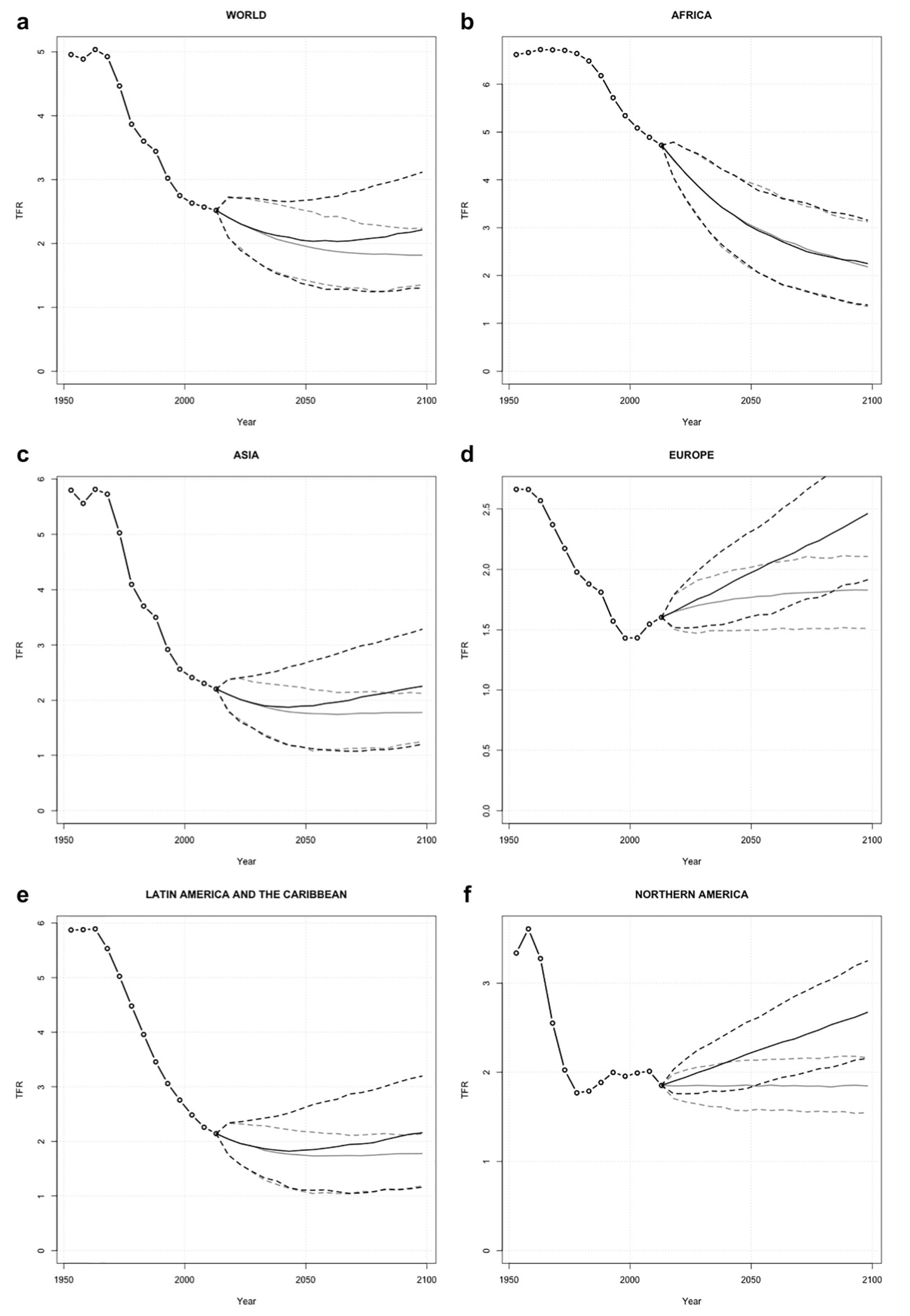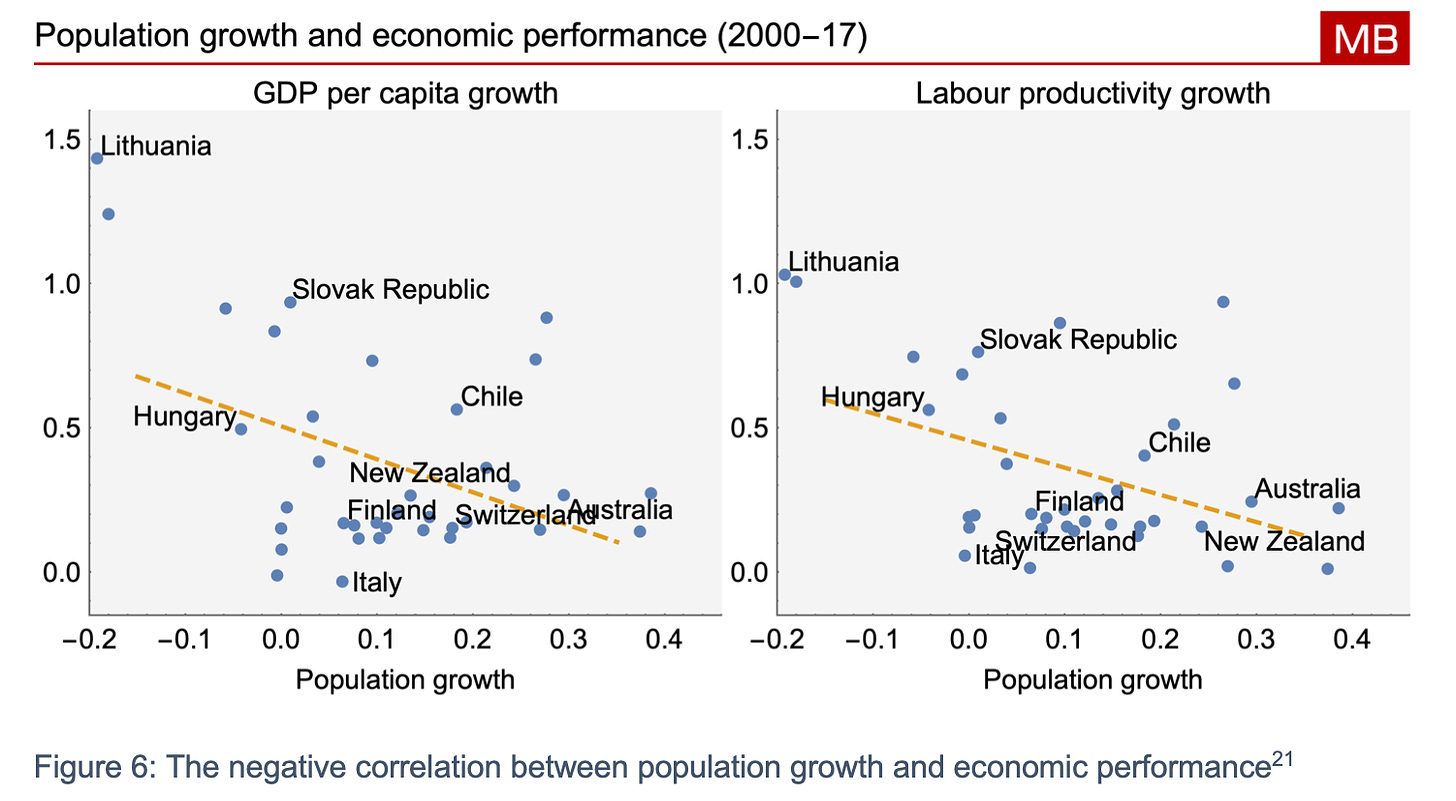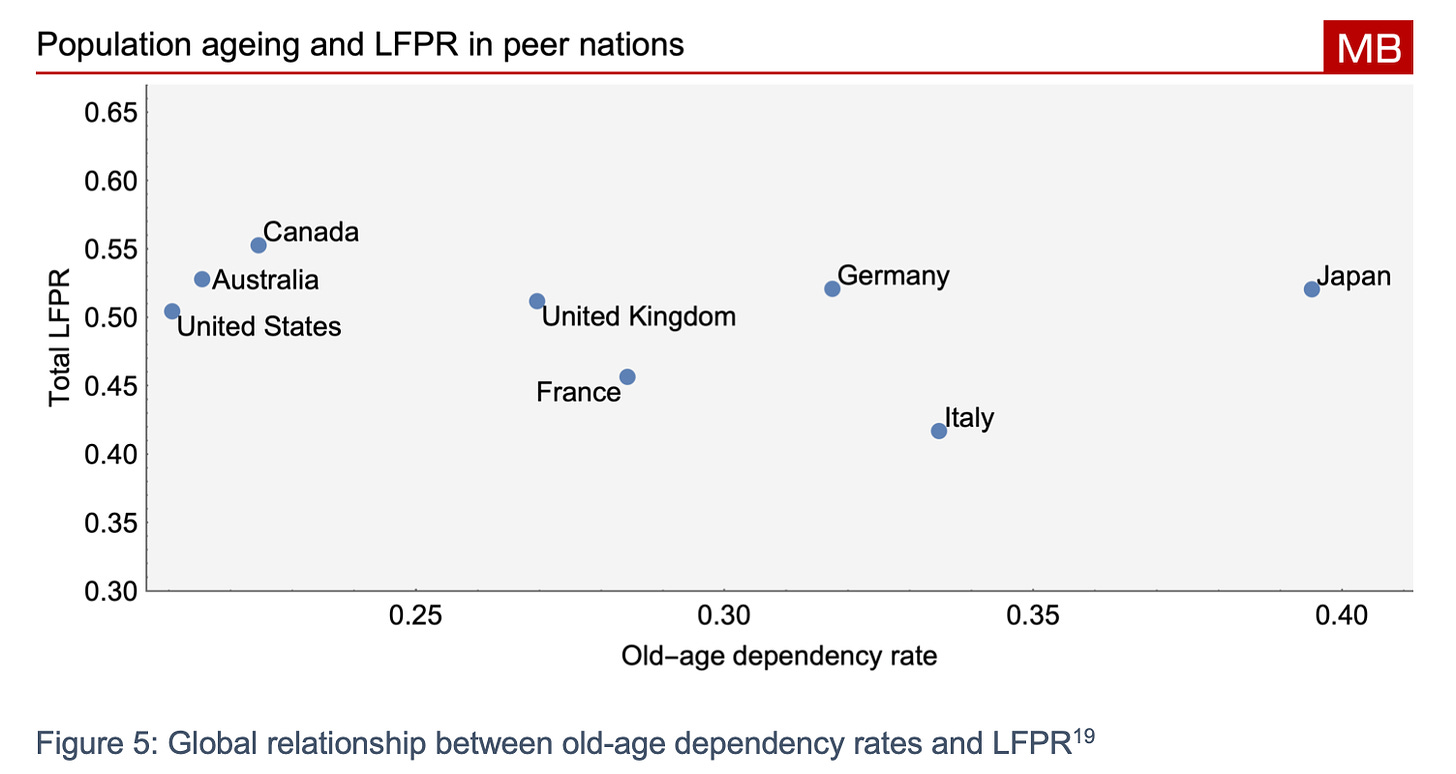A certain type of person loves to obsess over an arbitrary point of “fertility falling below replacement” as if that is the point of no return for population collapse.
The world’s richest man is worried that there aren’t enough humans.
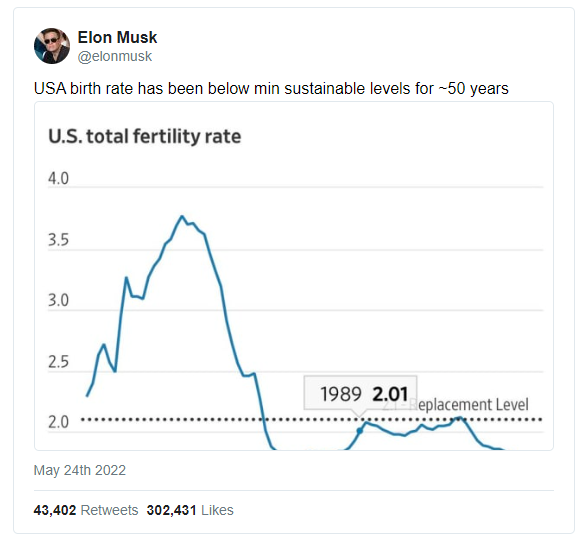

So I think I see where the panic comes from. People seem to conflate birth rates falling below fertility with an inevitable population collapse. Once you fall under the replacement rate, a collapse must continue until there are no humans left. Or something like that.
This seems entirely at odds with the reality that there are more human beings alive today than at any point in the history of the universe.
Further, the total number of humans alive today doesn’t really tell us much about the total number of humans that will ever live.
So why the obsession with more humans being alive at the same time rather than over time?
It’s a question I think needs to be asked in these discussions.
There are three main reasons I am not worried about fertility decline.
- The experience of countries that saw previous declines
- Fertility is probably heritable
- Age structure is not that important
Previous fertility declines usually bounce back
The United State population is now over 100 million larger today that in 1985. Sure, there was a lot of migration. But the fertility recovery contributed too.
It is reasonably common for fertility rates to move in cycles, and even for slight recoveries from the “fertility transition” to occur.

Is fertility heritable?
It seems likely that fertility is heritable as this paper explains.
If this is true, we should expect fertility recoveries in many more places. The below charts are the simulations from that paper. The grey lines show the baseline projections and the black lines show the difference that adding some heritability of fertility makes to the projection.
Notice that in Europe, most projections are already for a recovery in the fertility rate over the longer term. Add heritability and you get a more fertile long-term pattern
Even the baseline forecasts show world population growing until the end of the century.
Age structure
Lastly, many express concerns that low fertility means an ageing population. The fear is that there will be too many old people for young people to support.
I have a whole report debunking this concern.
Firstly, low population growth is related to higher productivity growth.
Indeed, a study by MIT economists found that
…that even when we control for initial GDP per capita, initial demographic composition and differential trends by region, there is no evidence of a negative relationship between aging and GDP per capita; on the contrary, the relationship is significantly positive in many specifications.
Also, ageing doesn’t seem to change the overall participation in the formal workforce.
And lastly, of course, children are dependents too. So those concerned about looking after people who aren’t in the workforce should factor in the fewer dependent children rather than looking at one side of the ledge only.
In sum
Don’t worry so much. Populations change and evolve and that’s fine. Support people to have as many children as they like. But let’s not worry about problems that seem to exist mostly in our imaginations.
Dr Cameron Murray is co-author of the Book Game of Mates. Subscribe to his written work at Fresheconomicthinking.substack.com.
